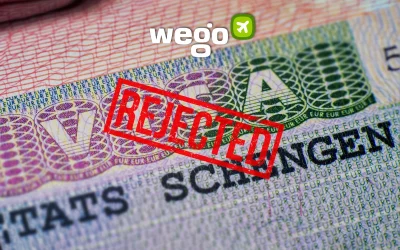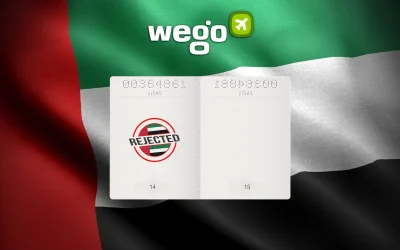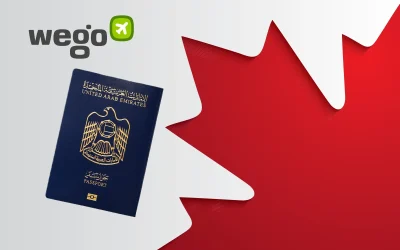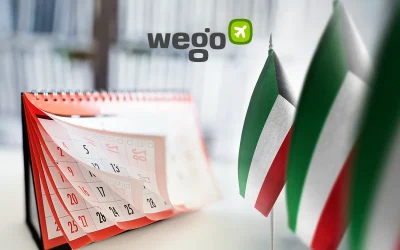This article is reviewed regularly by Wego’s editorial team to ensure that the content is up to date & accurate.
Reviewed March 2024
Obtaining a US visa represents a gateway to a world of exciting opportunities, whether it’s exploring vibrant cities like New York or pursuing your education at renowned American universities. Nonetheless, this journey can be marked by uncertainties and hurdles, one of the most disheartening being the rejection of your US visa application.
Understanding how to effectively address this setback is imperative for those who have experienced the disappointment of a US visa rejection. In this article, Wego will delve into the reasons behind US visa rejections and explore the available alternatives and solutions.
Table of Contents
US visa rejection
According to U.S. legal regulations, visa applicants are required to undergo an interview conducted by a consular officer at a U.S. Embassy or Consulate. This interview entails a thorough examination of the applicant’s information, adhering to rigorous standards established by U.S. law. These standards play a pivotal role in determining whether an application will be granted or rejected.
It is important to acknowledge that while most visa applications are approved, it is essential to recognize that specific criteria outlined in U.S. law can lead to the denial of an application. These criteria are in place to safeguard the security and integrity of the U.S. immigration system.
US visa rejection rate
The overall US visa rejection rate can vary significantly depending on the type of visa and the applicant’s country of origin. For instance, in fiscal year 2022, the US B-visa refusal rate for Chinese citizens stood at approximately 27 percent, while the rejection rate for Indian citizens was notably lower, at about 11%. In the case of Pakistan, the rejection rate for US B Visas in fiscal year 2022 was about 41%.
US visa rejection reasons
When a consular officer assesses your visa application and determines that you fail to meet the eligibility criteria specified by U.S. law, your application will be denied, accompanied by a clear explanation for the denial. These explanations are termed “ineligibilities.”
In certain cases, these ineligibilities can be surmountable, either by the visa applicant or the U.S. petitioner, particularly in specific immigrant visa situations. Nevertheless, it’s essential to understand that certain ineligibilities are permanent. This implies that unless the Department of Homeland Security grants a waiver, you will consistently be deemed ineligible under the same section of the law whenever you apply for a visa.
Here are some prevalent examples of visa ineligibilities:
- incomplete visa application and/or missing required supporting documentation
- failure to establish eligibility for the applied visa category or to dispel the presumption of intending immigration
- conviction of a crime involving moral turpitude
- conviction of a drug-related offense
- two or more criminal convictions resulting in a cumulative sentence of 5 years or more
- insufficient affidavit of support when mandated, leading to denial on public charge grounds
- misrepresentation of a material fact or engaging in fraud to obtain a visa
- previous overstay in the United States beyond the authorized duration
Please note that these examples represent only a portion of visa ineligibilities. For a comprehensive list of all visa ineligibilities, you can refer to the “Ineligibilities and Waivers: Laws” section of the Immigration and Nationality Act.
US visa rejection options
In the event of a visa application denial, the initial step involves a thorough examination of the specific section of the Immigration and Nationality Act (INA) under which you were deemed ineligible.
It’s important to note that there isn’t a formal appeal process for visa rejections. However, if you believe that there is additional information relevant to the visa decision or if substantial changes have occurred in your circumstances since your last application, you are eligible to submit a new visa application.
Should you decide to reapply for a visa in the future, except in cases of 221(g) refusals (related to incomplete applications or supporting documentation), you will be required to initiate a completely new visa application process and remit the visa application fee once again. This means restarting the application procedure from the beginning.
If you were found ineligible under section 214(b) of the INA, which pertains to visa qualifications and immigrant intent, it is advisable to provide evidence of significant changes in your circumstances since your prior application. These changes can help address the concerns that resulted in your initial rejection.
To reapply, you must complete a fresh application form, remit the application fee, and schedule a new interview appointment.
US visa rejection refund
The fee linked to a US visa application is non-refundable, irrespective of the outcome, be it an approval or rejection. In the event of a visa application not being approved, you do have the option to submit a new application; however, this will require payment of the necessary fee once more.
It is crucial to conduct a comprehensive review of the reasons behind your previous rejection and take proactive steps to ensure that your new application is meticulously prepared. Ensuring the inclusion of all necessary documents and information is vital to improve the prospects of approval in your renewed application.













